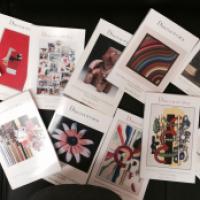The KNIGHTLYnews is an online forum where FWS instructors and other teachers of writing can swap and share ideas for best classroom practice. Weekly posts are designed to help teachers develop lesson plans and writing assignments, and respond to classroom challenges by introducing new teaching tools and sharing emerging pedagogical ideas. Posts also direct readers to program and campus resources that support teaching and learning, and provide opportunities for peer collaboration and mentorship. #teachlikeabear
Many peer-review activities assign different “roles” to different reviewers, on the principle that peer-review works best when it is limited, focused and guided—where students don’t have to worry about responding to everything all at once. “Exchange papers and give each other some feedback” is doomed to fail. Peer review can be limited either in time (e.g., 10-15 minutes instead of 50-75), in scope (look only at the introduction or a body paragraph rather than the whole paper) or in the focus of attention (examine only the integration of source material or variety of sentence structure).
Instructors shouldn’t try to respond to everything they see all at once either!
I have seen exercises where, within each peer-review group, one student is assigned to be “The Lawyer,” who comments only on the evidence and argumentation; one is “The Grammarian,” who attends only to syntactical or surface matters; another “The Architect,” who looks at organization and transitions, etc. You can make up your own categories. Each student is only responsible for one aspect of the overall review, and each gets multiple reviews of the same draft from different perspectives. (Having played “The Lawyer” for two or three peers, that student is in a better position to play it for themselves.) Role-playing also can reduce some of the fears about hurt feelings and apprehensions about “authority.”
I teach a First-Year Writing Seminar on Jane Austen, so my version of this role-playing game is to assign the personae of various Bennet sisters. This variation has the added benefit of encouraging students to read Pride and Prejudice more carefully and actively—it is a species of “writing to read” activity, embedded within the world of the book we’re reading.
I usually limit the activity also by confining it to the first draft of a very short, early paper (2-3 pages) that briefly excavates some historical context for a specific reference in Pride and Prejudice to some aspect of everyday life in England circa 1800 (transportation, etiquette, books, cuisine, etc.). On later, longer papers I would likely sequester their attention to parts of the draft only, not its entirety.
We spend time beforehand talking about the idiosyncratic mindset of each sister (especially as a kind of reaction-formation to the spiky conjugal and familial situation in the Bennet household), and what kinds of attention each would be likely to pay to a piece of writing. After all, so much responding to texts occurs in the novel! Extra points—imaginary ones—are awarded if students can actually speak in the characteristic idiom of each sister. They can take the intellectual work seriously and still have fun.
- “Mary,” as the nerdiest sister, would be the one most concerned about “correctness,” conventions, and “authorities.”
- “Jane,” as the most sincere and generous sister, would highlight the draft’s existing strengths, would honor and seek to enhance the writer’s best intentions.
- “Lydia,” as the most scatterbrained (and self-involved) sister, would need everything to be very clear and coherent, corresponding to the reader’s needs for lucidity, explicit signposting, full explanation, etc.
- “Lizzy” would just want it to be smarter, wittier, more stylish. She wouldn’t scruple to point out flaws, quirks, inconsistencies--even though she’s capable of them herself!
(Poor “Kitty.” She gets left out of everything.)
Could this be done with “The Schuyler Sisters” from Hamilton? I don’t know. Dumbledore, Snape, and McGonagall? Kirk, Spock and Uhura? Mulder and Scully, Holmes and Watson? Carrie, Samantha, Miranda and Charlotte? Make up your own characters.
In my most common variation, I take on the role of “Jane Bennet” and play cheerleader for each student, leaving trios of students to play Mary/Lydia/Lizzy for one another. Each student brings in two hard copies, one for each other sister in the group, spending perhaps 10-15 minutes on each. (Plus one copy for me, which I can skim to look for patterns while they are reviewing one another. I urge them to start revising before they receive written comments from me.) Roles could be rotated in subsequent rounds of review so each student eventually gets to play each.
One final step: ask students to reflect briefly in writing about what they learned about their own draft from giving feedback to someone else.




